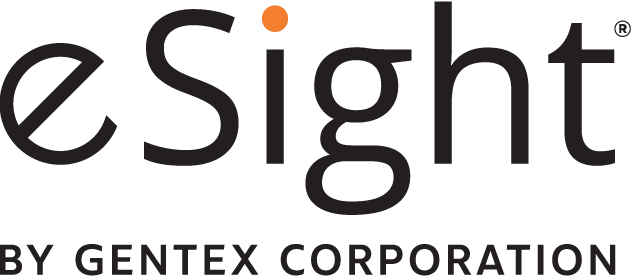Do you ever wrinkle your head in confusion when you hear terms like visual acuity and visual field, or wonder what the difference is between low vision and legally blind? This post will help answer those questions with an easy-to-understand low vision glossary.
Visual Acuity
Visual acuity is a term to describe the clarity or sharpness of vision measured at a distance of 20 feet. If a person has 20/20 vision, that means they can see clearly at 20 feet. 20/20 is also the definition of having “normal vision.” If someone has 20/100 vision, that means they need to stand as close as 20 feet to see what a fully sighted person can see at 100 feet.
Visual Field
The visual field refers to what degree an individual can see from the nasal outwards while looking forward.

Visual Impairment or Visually Impaired
The World Health Organization (WHO) estimates that 1.3 billion people in the world live with some form of visual impairment. Visual impairment is an umbrella term used to describe all vision loss from total to partial. According to the WHO, visual impairment can contain various degrees of impairments from moderate (20/70) to profound (20/1000) when best corrected.

Legally Blind
Legally blind is an American term referring to people that meet one of two criteria. The first is they may have less than 20/200 vision in their better eye. Or they may have a visual field of no more than 20 degrees, also referred to as tunnel vision. People who are considered legally blind often have some vision, but will likely need visual enhancement aids.
Low Vision
This definition is a little more controversial. The numerical definition is a person that has 20/70 vision according to the WHO. However, some eye care professionals believe this definition shouldn’t be based exclusively on a visual acuity description. They believe low vision should also describe when vision loss interferes with daily living activities.
Total or Profound Blindness
Only a small percent of those considered visually impaired fall under this category. Individuals living with total blindness typically require other non-visual forms of communication like braille or audio.
Required Information to Determine if eSight Can Help
eSight has been clinically validated to enhance vision for people considered in both the legally blind and low vision categories. eSight advisors will ask about a person’s visual acuity and field of vision when determining if someone is a candidate for the medical device. Contact us here, and be sure to have your eye condition information ready.
Did you find this blog post helpful? Keep reading about products for the visually impaired.
